2026 Predictions Showcase
Also, we're featuring our AI in Networking report — one of our most popular reports in 2025. If you haven't yet checked it out, download your copy (ungated).
2026 Predictions from Thought Leaders in Infrastructure Technology
Reader feedback on AI in Networking 2025 — Harnessing the AI Deluge: “well-written,” “tracks the cutting edge in AI,” “thoughtful.” Grab your copy now and give it a read today!
2026 Predictions from AI, Networking, Cloud, Security, and Mobile Thought Leaders
Views and predictions expressed are those of the presenting individuals and companies and may not necessarily represent views of Converge! Network Digest or AvidThink.

AI, Security & New Revenue Opportunities
Stephan Rettenberger, SVP of Marketing and Corporate Communications at Adtran discusses AI’s continued industry dominance constrained by power consumption; digital sovereignty and security advances including post-quantum cryptography; and service providers evolving beyond infrastructure into digital platforms.
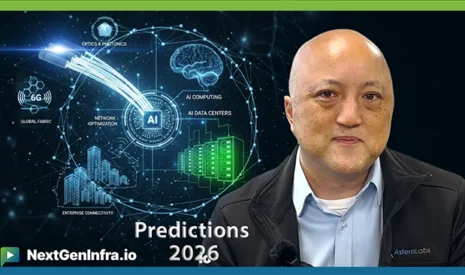
Specialized Accelerators, Hybrid Fabrics & Tiered Memory
Thad Omura, Chief Business Officer at Astera Labs, expects adaptability and flexibility through specialized accelerators, hybrid AI fabric solutions combining multiple protocols, and tiered memory architectures for large-scale inference workloads to be front and center in 2026.
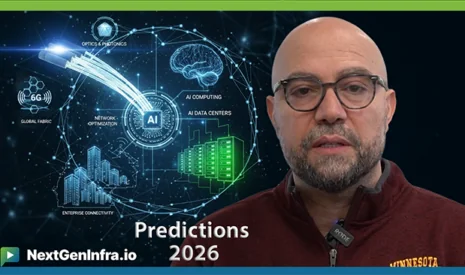
5 Fiber Industry Trends Shaping 2026
Anis Khemakhem, Chief Marketing Officer at Clearfield, identifies five major trends shaping the fiber industry, including accelerated global fiber deployment driven by BEAD funding and public-private partnerships, the growing importance of simplified design and training to address workforce shortages, and speed and density innovations through higher-capacity hardware and multi-gigabit technologies.
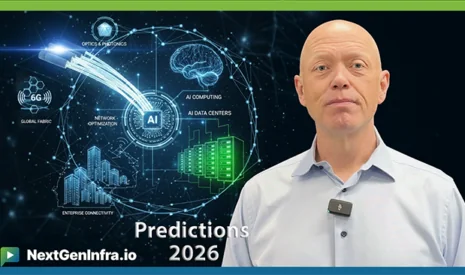
Inference, Neoclouds & Reliability Challenges
Don Barnetson, SVP & Head of Product at Credo, talks about “the year of inference” as AI shifts from training to decode-heavy applications requiring significantly more memory capacity, while AI spending moves from traditional hyperscalers to neoclouds that need vendor support for rapid deployment.

GPUs diversity and Ethernet in Scale-Up
Dudy Cohen, VP of Product Marketing at DriveNets, presents three predictions for 2026 AI infrastructure: a more heterogeneous GPU market, networking becoming a critical design consideration, and Ethernet emerging as the leading technology across all AI infrastructure connections (from scale-up to scale-out).
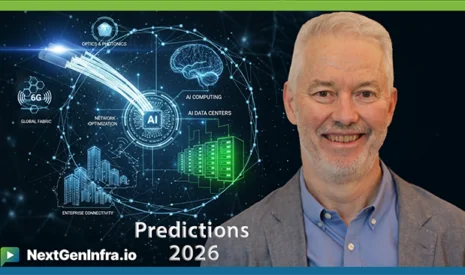
Ethernet's Path to AI Dominance
Peter Jones, Chair of the Ethernet Alliance and Cisco Systems employee, presents predictions for Ethernet in AI applications, expressing confidence that Ethernet will succeed despite uncertainty about the specific path forward. He emphasizes that while the exact methods remain unclear, the industry understands its objectives and will determine the necessary approaches to meet customer needs.

Fiber Growth, Quantum & AI Infrastructure
Gary Bolton, President and CEO of the Fiber Broadband Association, predicts that 2026 will see record fiber deployment driven by private investment and BEAD program funding, while quantum networking becomes critical as “Q Day” threats accelerate the need for enhanced encryption security.

AI Bubble Correction in 2026: Network Infrastructure's Critical Role
Ali Shaikh, Chief Executive Officer of Graphiant, expects a significant correction in the AI bubble as rapid model scaling and data center expansion reach a plateau, shifting focus toward actual business value and real-world applications. He shares how this will impact networking in 2026.
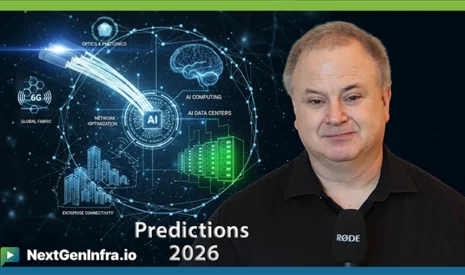
The Future of Ethernet: 200G to 3.2T and Beyond
John D’Ambrosia, Chair of the IEEE P802.3dj Task Force at IEEE, discusses the future of Ethernet, focusing on the completion of the 802.3dj standard introducing 200 Gbps signaling for speeds up to 1.6 terabit Ethernet, with products already shipping. He highlights the industry’s move toward defining 400 Gps signaling as the foundation for next-generation speeds including 3.2Tbps Ethernet and beyond.

AI CPU Deployments, Edge Computing & 6G
Cristina Rodriguez, VP and GM of Network & Edge Group at Intel, forecasts widespread AI deployments using CPU native capabilities for radio algorithms and infrastructure optimization, enterprise adoption of on-premises edge computing with multi-tenancy support, and intensive industry focus on defining 6G standards and monetization strategies.
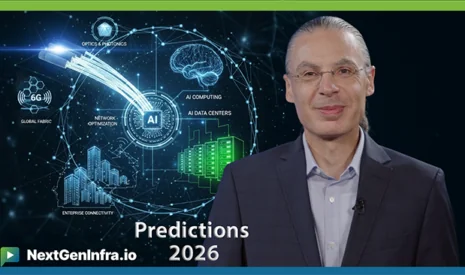
3 Predictions: Optical Networks, AI Chip Design & Memory Architecture
Noam Mizrahi, EVP and Corporate CTO at Marvell, presents three key predictions for the semiconductor and AI infrastructure landscape in the coming year. He anticipates hybrid electrical-optical connectivity evolving to fully optical by 2027, greater integration of AI capabilities into chip design technologies, and expanded memory capacity beyond traditional HBM through attached or disaggregated architectures.
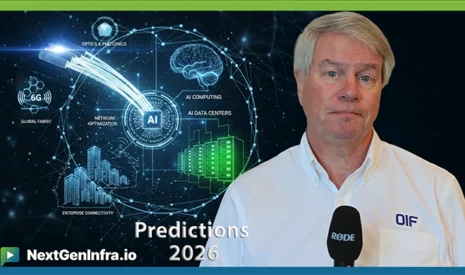
OIF on 448G, Coherent Lite, CMIS & Power Efficiency
Nathan Tracy, President of OIF, discusses 2026 predictions focusing on the industry’s push toward 400/448 Gbps implementation while addressing reliability, power efficiency, and reach challenges, with particular emphasis on coherent lite market development and CMIS as critical firmware infrastructure for AI applications.

4 Predictions for 2026: 5G Advanced, Telco AI, Satellite-to-Device & 6G
Stephen Douglas, Head of Market Strategy at Spirent, talks about 5G Advanced momentum with RedCap IoT and location services, telco AI offerings like GPU-as-a-service, and expanded non-terrestrial direct-to-device capabilities beyond emergency use cases. He also discusses accelerated 6G standardization focused on new spectrum bands, integrated sensing, and cybersecurity.

AI Data Centers, Quantum Security & Sensing Convergence
Sameh Yamany, CTO & Chief AI Officer at VIAVI, discusses convergence of networks, security, AI, photonics, and sensing that will fundamentally change how the industry designs, deploys, and tests infrastructure. He forecasts how high speed data center networking, AI-enabled cybersecurity threats, and use of AI in RAN will have implications on testing needs this coming year.

3 Predictions for Enterprise AI and Infrastructure in 2026
James Tomko, SVP of Sales at Zayo, predicts that enterprise AI adoption will enter an expansion phase in 2026 with increased ROI evaluations and operational integration, while the Neocloud vertical will see market separation between successful and struggling companies amid capital intensity challenges.